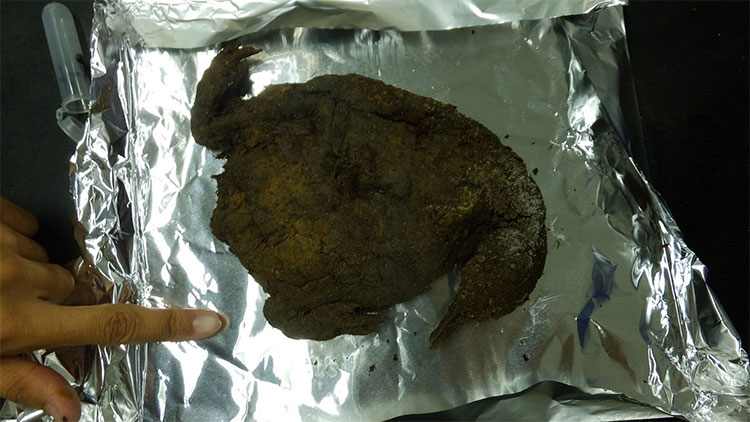Why do hundreds of Antarctic penguins turn into mummies?
Hundreds of penguins were found intact in Antarctica. The reason is not that a plague a thousand years ago has swept across this frozen continent, not by being killed by any carnivore.
The truth is that they have been destroyed by the cold, dry environment of Antarctica during the period of two extreme climatic forms 1,000 years ago, which are extremely heavy rain and ice .
According to Professor Liguang Sun, an expert on earth science at the Polar Environment Institute, of the China University of Science and Technology, the head of the research team said: 'It is possible that warming is possible. The bridge has caused great rain and became the cause of that tragedy. '
The research team happened to find cold and cold penguin carcasses preserved in the Long Peninsula of the East Antarctic in 2016. Professor Sun said the penguin body had all its bones and feathers intact. In the Polar region, there are many, but with such a large number of groups and a lot of young birds like this phenomenon is extremely rare.

The remains of penguins with whole bones and feathers in the Polar region are numerous.
Chronological dating of radioactive carbon shows that these penguins die more and more over decades, and this phenomenon occurred in two different periods, about 750 to 200 years ago. After studying samples of mummies, including manure and bird nest materials, the researchers concluded: ' extreme climatic phenomena that last for decades are The reason why these birds died ".
Besides, the researchers also found evidence of extreme rain floods that washed away the dead birds and other sediments to the foot of the mountain. The remaining sediment showed little that the surviving birds then left their old nesting place.
Learning about the penguin's tragedy in extreme climate events helps researchers predict what will happen to this bird in the future. In general, global warming trends will continue and even worsen, largely due to human activities. As a result, Antarctica will suffer more rain and snow, which increases the risk of penguins dying in the same way.
Being native to Antarctica, they currently have about 250 births. The International Union for Conservation of Nature (IUCN) lists this bird as not at risk of extinction. However, extreme weather events can completely push them into disaster.
In addition to historical evidence, many current evidence suggests that much increased rainfall and snowfall can kill young penguins. For example, during the 2013-2014 breeding season, 100% of the young birds of about 34 thousand mother birds were killed in three extremely heavy rain and snow events.
Young birds are easy to die in extreme rain and snow because their fur is not fully developed to protect their bodies from getting wet, resulting in death from hypothermia. Moreover, heavy snowfall also prevents parents from finding nesting materials and finding places without snow to spawn. Snow is also very dangerous for incubation, because melting snow can make eggs flooded, eggs cannot hatch or young birds hatch into a lack of weight needed to be healthy.
To prevent penguins from dying in mass, people need more effort to prevent trends.
- Antarctic penguins fell seriously
- The secret of not freezing of Antarctic penguins
- The penguin bunched up to warm the cubs
- Why are Antarctic penguins afraid of the dark?
- Thousands of emperor penguins in Antarctica disappeared after a night
- Antarctic emperor penguins doubled
- Hundreds of penguin corpses were discovered in Brazil
- New discovery about the existence of Antarctic penguins
- The secret of penguins
- Discovered a rare species of penguin in Antarctica
- Seals with penguins - the most fruitful love of the earth appeared
- Emperor penguins can disappear forever
 Discovered an ancient centipede fossil 99 million years old
Discovered an ancient centipede fossil 99 million years old Discovered bat-like dinosaurs in China
Discovered bat-like dinosaurs in China Discovered a 200-year-old bronze cannon of the coast
Discovered a 200-year-old bronze cannon of the coast Discover 305 million-year-old spider fossils
Discover 305 million-year-old spider fossils Why can migratory birds fly thousands of kilometers without eating?
Why can migratory birds fly thousands of kilometers without eating?  When it rains, where do the birds take shelter?
When it rains, where do the birds take shelter?  100 years ago, a man released 60 strange birds, causing the US to lose $1 billion a year.
100 years ago, a man released 60 strange birds, causing the US to lose $1 billion a year.  Ancient Egyptian masterpiece so realistic that scientists accurately identified the birds in the painting
Ancient Egyptian masterpiece so realistic that scientists accurately identified the birds in the painting  Scientists plan to turn dead birds into drones
Scientists plan to turn dead birds into drones  Why did birds survive while dinosaurs became extinct?
Why did birds survive while dinosaurs became extinct? 